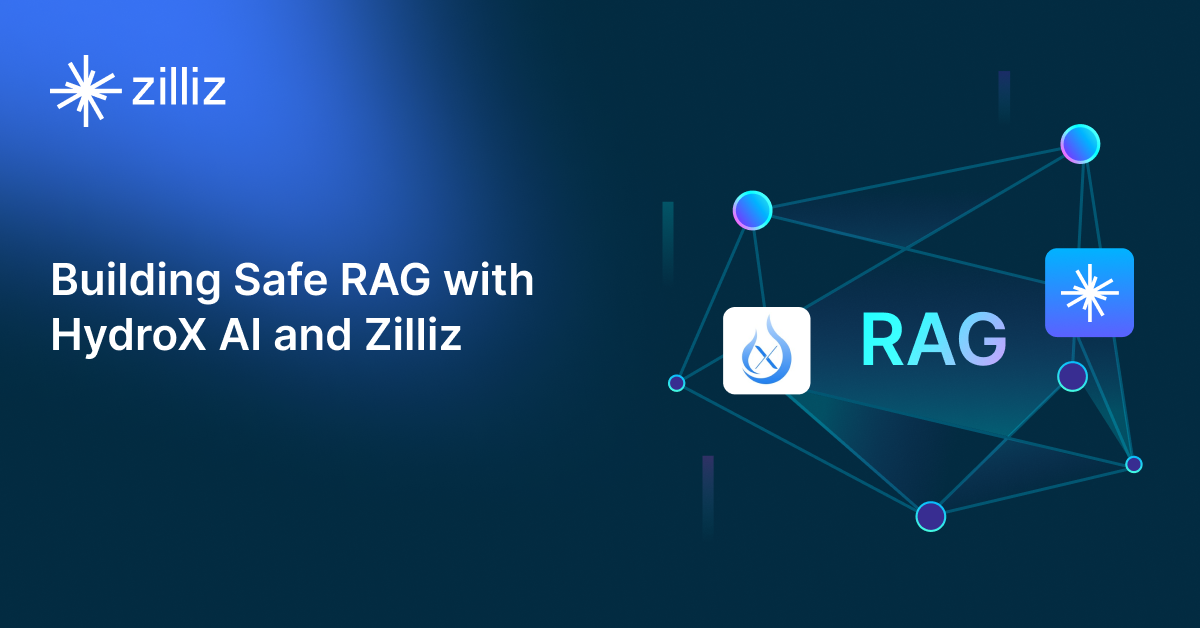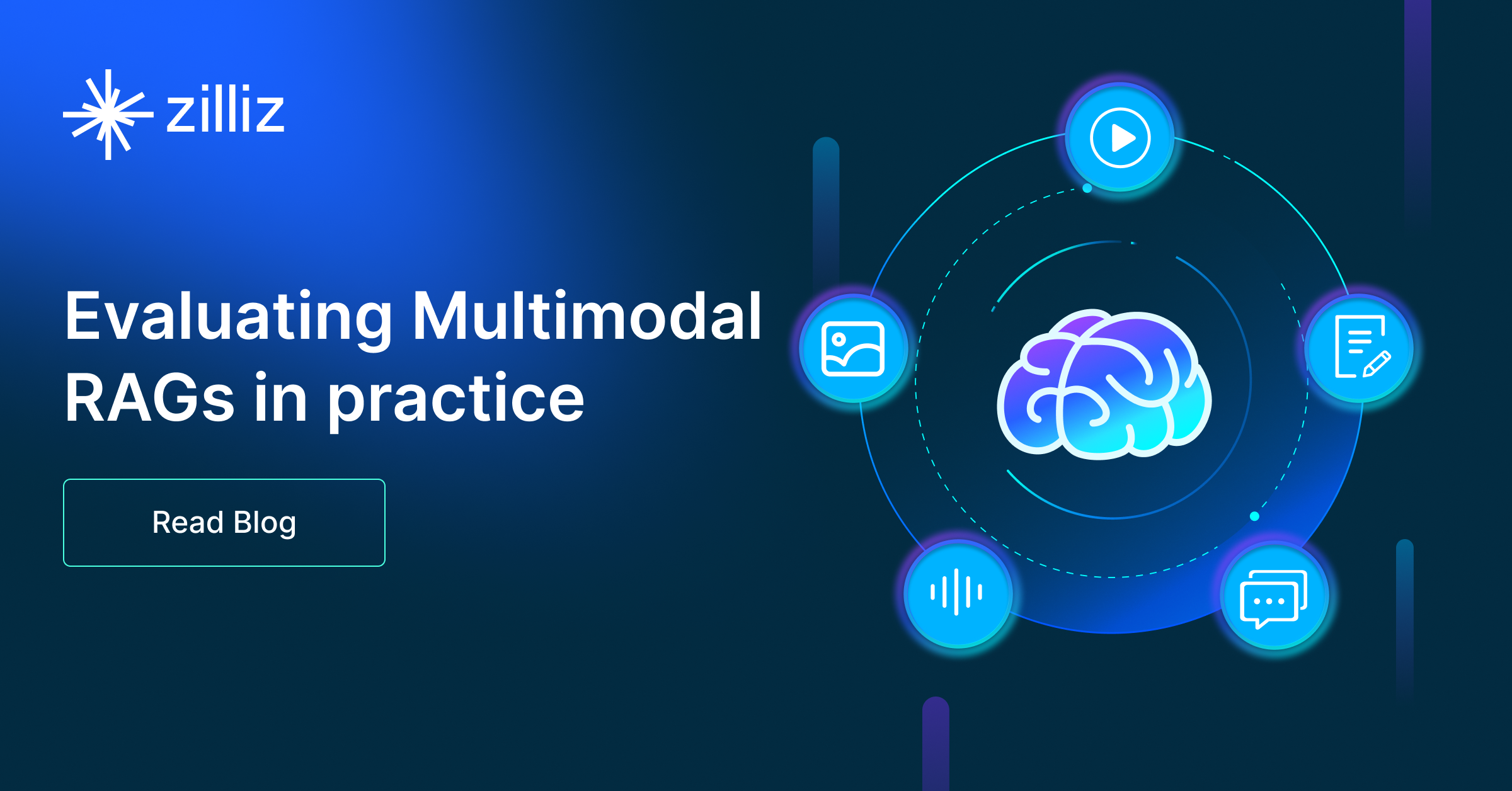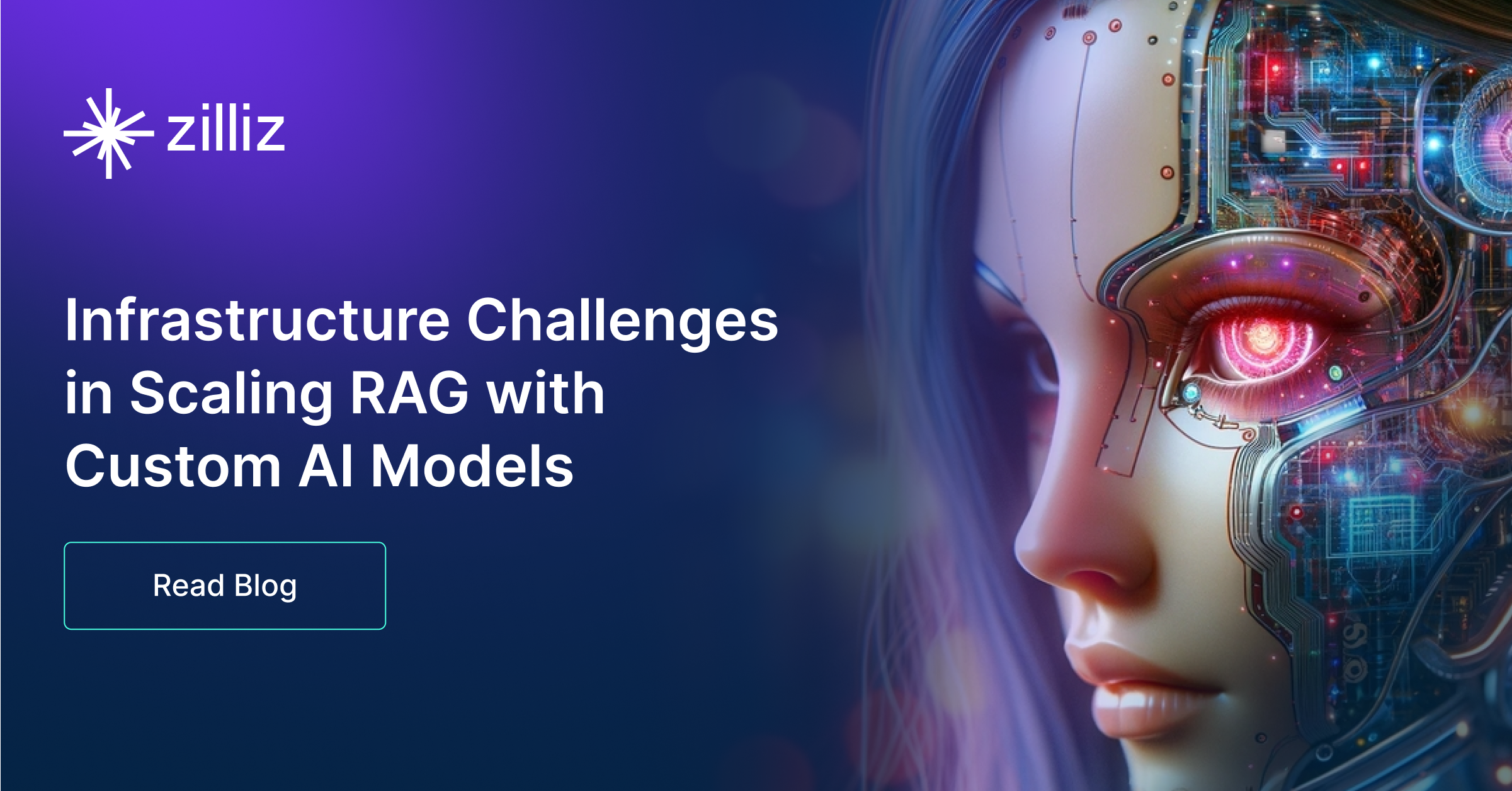Build RAG Chatbot with LangChain, Milvus, AWS Bedrock Claude 3 Opus, and Azure text-embedding-ada-002
Introduction to RAG
Retrieval-Augmented Generation (RAG) is a game-changer for GenAI applications, especially in conversational AI. It combines the power of pre-trained large language models (LLMs) like OpenAI’s GPT with external knowledge sources stored in vector databases such as Milvus and Zilliz Cloud, allowing for more accurate, contextually relevant, and up-to-date response generation. A RAG pipeline usually consists of four basic components: a vector database, an embedding model, an LLM, and a framework.
Key Components We'll Use for This RAG Chatbot
This tutorial shows you how to build a simple RAG chatbot in Python using the following components:
- LangChain: An open-source framework that helps you orchestrate the interaction between LLMs, vector stores, embedding models, etc, making it easier to integrate a RAG pipeline.
- Milvus: An open-source vector database optimized to store, index, and search large-scale vector embeddings efficiently, perfect for use cases like RAG, semantic search, and recommender systems. If you hate to manage your own infrastructure, we recommend using Zilliz Cloud, which is a fully managed vector database service built on Milvus and offers a free tier supporting up to 1 million vectors.
- AWS Bedrock Claude 3 Opus: This model from the Claude 3 family focuses on high-performance natural language understanding and generation. It’s designed for applications that require nuanced text creation, detailed analysis, and advanced conversational capabilities. Ideal for enterprises looking to enhance customer interactions, content creation, and complex query handling while optimizing scalability.
- Azure text-embedding-ada-002: This model specializes in generating high-quality text embeddings, enabling effective semantic search and natural language understanding. Its strengths lie in producing contextually rich representations that enhance tasks like text classification, clustering, and recommendation systems, making it ideal for applications in content discovery and personalized user experiences.
By the end of this tutorial, you’ll have a functional chatbot capable of answering questions based on a custom knowledge base.
Note: Since we may use proprietary models in our tutorials, make sure you have the required API key beforehand.
Step 1: Install and Set Up LangChain
%pip install --quiet --upgrade langchain-text-splitters langchain-community langgraph
Step 2: Install and Set Up AWS Bedrock Claude 3 Opus
pip install -qU "langchain[aws]"
# Ensure your AWS credentials are configured
from langchain.chat_models import init_chat_model
llm = init_chat_model("anthropic.claude-3-opus-20240229-v1:0", model_provider="bedrock_converse")
Step 3: Install and Set Up Azure text-embedding-ada-002
pip install -qU langchain-openai
import getpass
import os
if not os.environ.get("AZURE_OPENAI_API_KEY"):
os.environ["AZURE_OPENAI_API_KEY"] = getpass.getpass("Enter API key for Azure: ")
from langchain_openai import AzureOpenAIEmbeddings
embeddings = AzureOpenAIEmbeddings(
azure_endpoint=os.environ["AZURE_OPENAI_ENDPOINT"],
azure_deployment=os.environ["AZURE_OPENAI_DEPLOYMENT_NAME"],
openai_api_version=os.environ["AZURE_OPENAI_API_VERSION"],
)
Step 4: Install and Set Up Milvus
pip install -qU langchain-milvus
from langchain_milvus import Milvus
vector_store = Milvus(embedding_function=embeddings)
Step 5: Build a RAG Chatbot
Now that you’ve set up all components, let’s start to build a simple chatbot. We’ll use the Milvus introduction doc as a private knowledge base. You can replace it with your own dataset to customize your RAG chatbot.
import bs4
from langchain import hub
from langchain_community.document_loaders import WebBaseLoader
from langchain_core.documents import Document
from langchain_text_splitters import RecursiveCharacterTextSplitter
from langgraph.graph import START, StateGraph
from typing_extensions import List, TypedDict
# Load and chunk contents of the blog
loader = WebBaseLoader(
web_paths=("https://milvus.io/docs/overview.md",),
bs_kwargs=dict(
parse_only=bs4.SoupStrainer(
class_=("doc-style doc-post-content")
)
),
)
docs = loader.load()
text_splitter = RecursiveCharacterTextSplitter(chunk_size=1000, chunk_overlap=200)
all_splits = text_splitter.split_documents(docs)
# Index chunks
_ = vector_store.add_documents(documents=all_splits)
# Define prompt for question-answering
prompt = hub.pull("rlm/rag-prompt")
# Define state for application
class State(TypedDict):
question: str
context: List[Document]
answer: str
# Define application steps
def retrieve(state: State):
retrieved_docs = vector_store.similarity_search(state["question"])
return {"context": retrieved_docs}
def generate(state: State):
docs_content = "\n\n".join(doc.page_content for doc in state["context"])
messages = prompt.invoke({"question": state["question"], "context": docs_content})
response = llm.invoke(messages)
return {"answer": response.content}
# Compile application and test
graph_builder = StateGraph(State).add_sequence([retrieve, generate])
graph_builder.add_edge(START, "retrieve")
graph = graph_builder.compile()
Test the Chatbot
Yeah! You've built your own chatbot. Let's ask the chatbot a question.
response = graph.invoke({"question": "What data types does Milvus support?"})
print(response["answer"])
Example Output
Milvus supports various data types including sparse vectors, binary vectors, JSON, and arrays. Additionally, it handles common numerical and character types, making it versatile for different data modeling needs. This allows users to manage unstructured or multi-modal data efficiently.
Optimization Tips
As you build your RAG system, optimization is key to ensuring peak performance and efficiency. While setting up the components is an essential first step, fine-tuning each one will help you create a solution that works even better and scales seamlessly. In this section, we’ll share some practical tips for optimizing all these components, giving you the edge to build smarter, faster, and more responsive RAG applications.
LangChain optimization tips
To optimize LangChain, focus on minimizing redundant operations in your workflow by structuring your chains and agents efficiently. Use caching to avoid repeated computations, speeding up your system, and experiment with modular design to ensure that components like models or databases can be easily swapped out. This will provide both flexibility and efficiency, allowing you to quickly scale your system without unnecessary delays or complications.
Milvus optimization tips
Milvus serves as a highly efficient vector database, critical for retrieval tasks in a RAG system. To optimize its performance, ensure that indexes are properly built to balance speed and accuracy; consider utilizing HNSW (Hierarchical Navigable Small World) for efficient nearest neighbor search where response time is crucial. Partitioning data based on usage patterns can enhance query performance and reduce load times, enabling better scalability. Regularly monitor and adjust cache settings based on query frequency to avoid latency during data retrieval. Employ batch processing for vector insertions, which can minimize database lock contention and enhance overall throughput. Additionally, fine-tune the model parameters by experimenting with the dimensionality of the vectors; higher dimensions can improve retrieval accuracy but may increase search time, necessitating a balance tailored to your specific use case and hardware infrastructure.
AWS Bedrock Claude 3 Opus optimization tips
Claude 3 Opus on AWS Bedrock is a high-capacity model suitable for complex RAG applications requiring deep reasoning. Optimize retrieval by using multi-step ranking strategies, ensuring only the most relevant documents are included in context. Keep prompts concise but comprehensive, structuring retrieved information in a logical order to guide the model effectively. Use temperature settings between 0.1 and 0.2 for fact-based tasks and slightly higher values for more creative responses. To manage API costs and latency, implement response caching and query batching for high-traffic applications. Leverage AWS Bedrock’s auto-scaling features to handle fluctuating workloads without compromising response time. If Opus is part of a multi-tiered system, use it selectively for high-value queries requiring deep analysis while offloading simpler tasks to smaller models.
Azure text-embedding-ada-002 Optimization Tips
To optimize the Azure text-embedding-ada-002 component in your Retrieval-Augmented Generation (RAG) setup, ensure that you batch your requests effectively to reduce latency and maximize throughput; try grouping up to 1000 tokens per request if possible. Preprocess your input data to remove unnecessary noise and stop words, which can improve embedding quality. Adjust the model’s parameters to suit your specific use case, focusing on the length of input sequences and maintaining token limits. Utilize caching mechanisms for frequently queried inputs to speed up retrieval, and regularly fine-tune your embeddings with domain-specific data to enhance relevance. Finally, monitor and analyze performance metrics continuously to make iterative adjustments that cater to any shifts in data patterns or retrieval needs.
By implementing these tips across your components, you'll be able to enhance the performance and functionality of your RAG system, ensuring it’s optimized for both speed and accuracy. Keep testing, iterating, and refining your setup to stay ahead in the ever-evolving world of AI development.
RAG Cost Calculator: A Free Tool to Calculate Your Cost in Seconds
Estimating the cost of a Retrieval-Augmented Generation (RAG) pipeline involves analyzing expenses across vector storage, compute resources, and API usage. Key cost drivers include vector database queries, embedding generation, and LLM inference.
RAG Cost Calculator is a free tool that quickly estimates the cost of building a RAG pipeline, including chunking, embedding, vector storage/search, and LLM generation. It also helps you identify cost-saving opportunities and achieve up to 10x cost reduction on vector databases with the serverless option.
 Calculate your RAG cost
Calculate your RAG cost
What Have You Learned?
By diving into this tutorial, you’ve unlocked the power of integrating cutting-edge tools to build a fully functional RAG system! You learned how LangChain acts as the glue, orchestrating the entire pipeline by connecting your data sources, processing inputs, and managing interactions between components. Milvus stepped in as your high-performance vector database, efficiently storing and retrieving the dense embeddings generated by Azure’s text-embedding-ada-002 model—transforming your text into rich numerical representations that capture semantic meaning. Then, AWS Bedrock’s Claude 3 Opus brought it all to life, leveraging its advanced reasoning capabilities to generate human-like, context-aware responses by synthesizing the retrieved data with your queries. Along the way, you discovered optimization tricks like tuning chunk sizes for embeddings, balancing latency with accuracy, and even using the free RAG cost calculator to estimate expenses and scale your projects smartly.
Now you’re equipped to create RAG applications that feel almost magical—whether it’s chatbots, research assistants, or custom knowledge bases. The best part? This is just the beginning. Experiment with different models, fine-tune retrieval strategies, or add layers like caching to boost performance. Remember, every tweak you make opens doors to new possibilities. So go ahead—build something bold, optimize fearlessly, and let your creativity shape the future of intelligent systems. The tools are in your hands, and the impact you can create is limitless. Ready, set, innovate! 🚀
Further Resources
🌟 In addition to this RAG tutorial, unleash your full potential with these incredible resources to level up your RAG skills.
- How to Build a Multimodal RAG | Documentation
- How to Enhance the Performance of Your RAG Pipeline
- Graph RAG with Milvus | Documentation
- How to Evaluate RAG Applications - Zilliz Learn
- Generative AI Resource Hub | Zilliz
We'd Love to Hear What You Think!
We’d love to hear your thoughts! 🌟 Leave your questions or comments below or join our vibrant Milvus Discord community to share your experiences, ask questions, or connect with thousands of AI enthusiasts. Your journey matters to us!
If you like this tutorial, show your support by giving our Milvus GitHub repo a star ⭐—it means the world to us and inspires us to keep creating! 💖
- Introduction to RAG
- Key Components We'll Use for This RAG Chatbot
- Step 1: Install and Set Up LangChain
- Step 2: Install and Set Up AWS Bedrock Claude 3 Opus
- Step 3: Install and Set Up Azure text-embedding-ada-002
- Step 4: Install and Set Up Milvus
- Step 5: Build a RAG Chatbot
- Optimization Tips
- RAG Cost Calculator: A Free Tool to Calculate Your Cost in Seconds
- What Have You Learned?
- Further Resources
- We'd Love to Hear What You Think!
Content
Vector Database at Scale
Zilliz Cloud is a fully-managed vector database built for scale, perfect for your RAG apps.
Try Zilliz Cloud for Free


